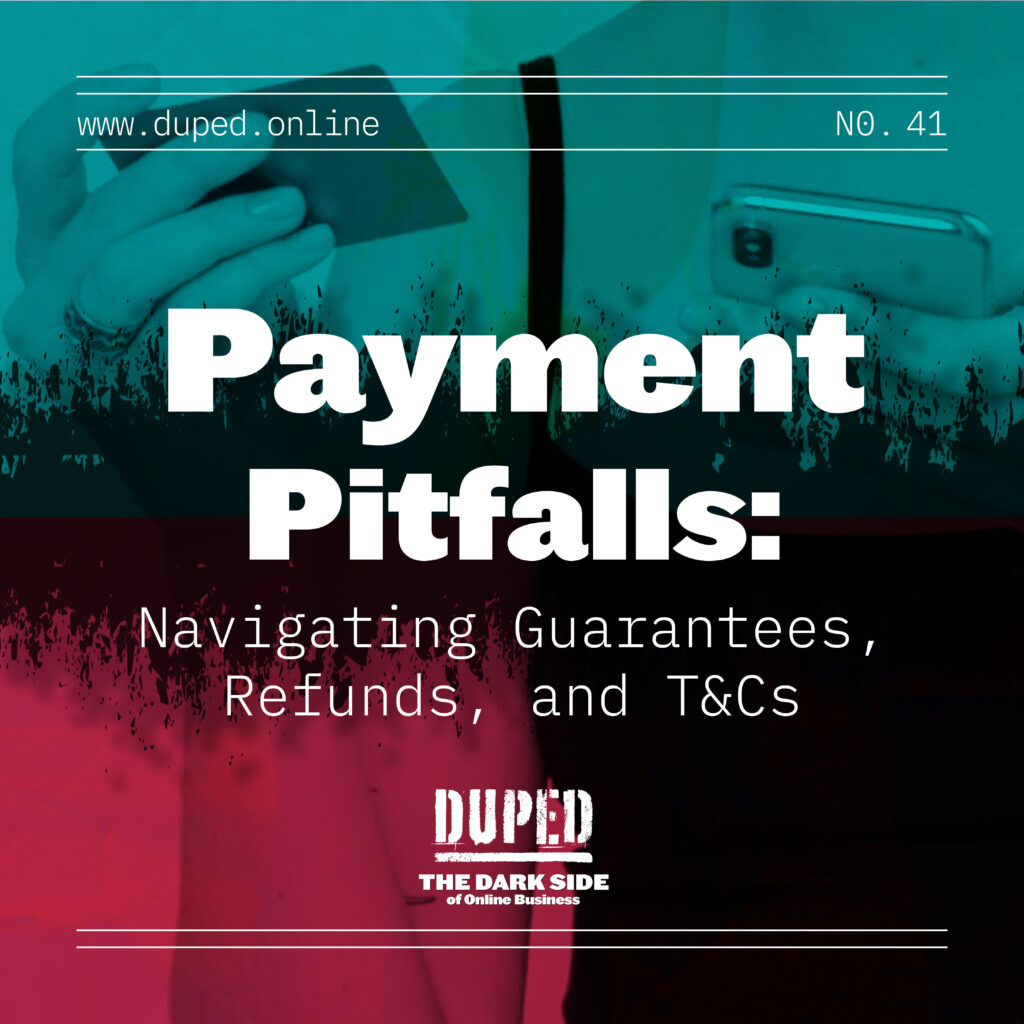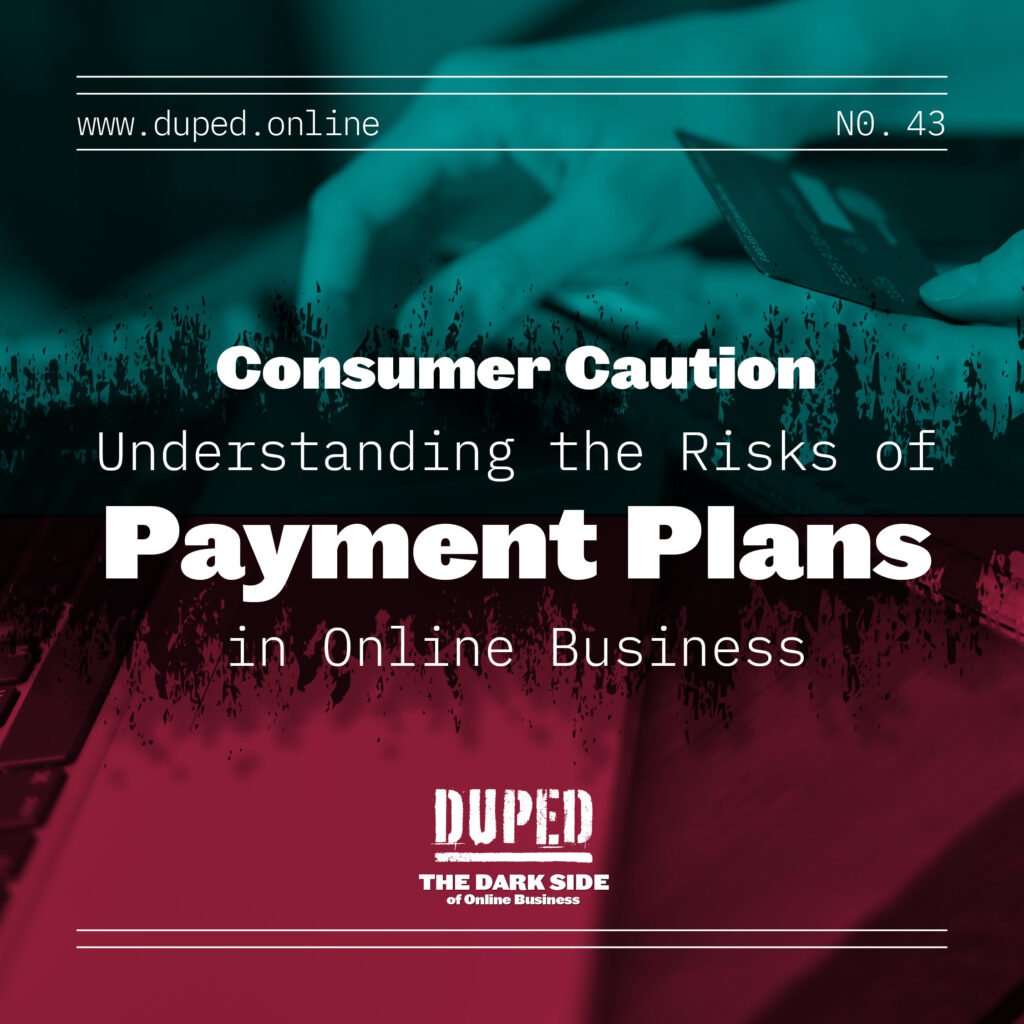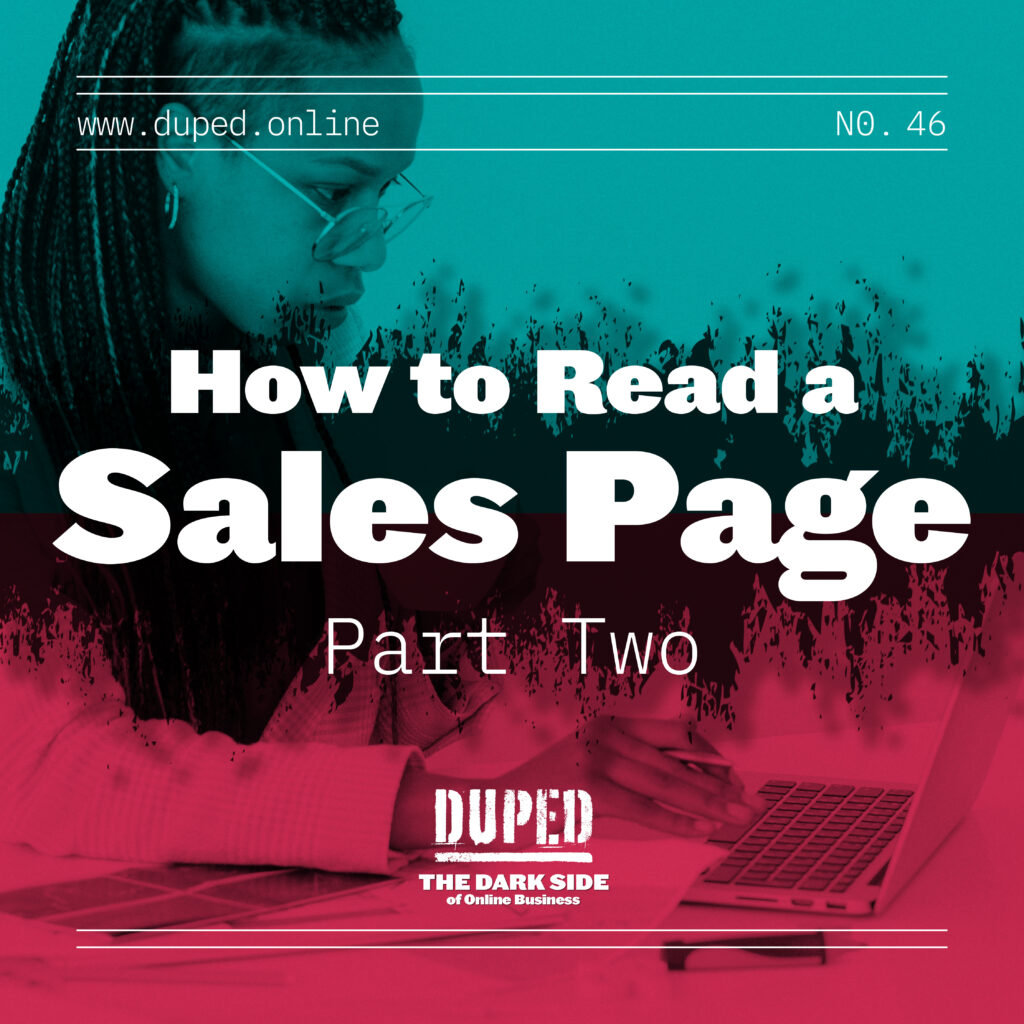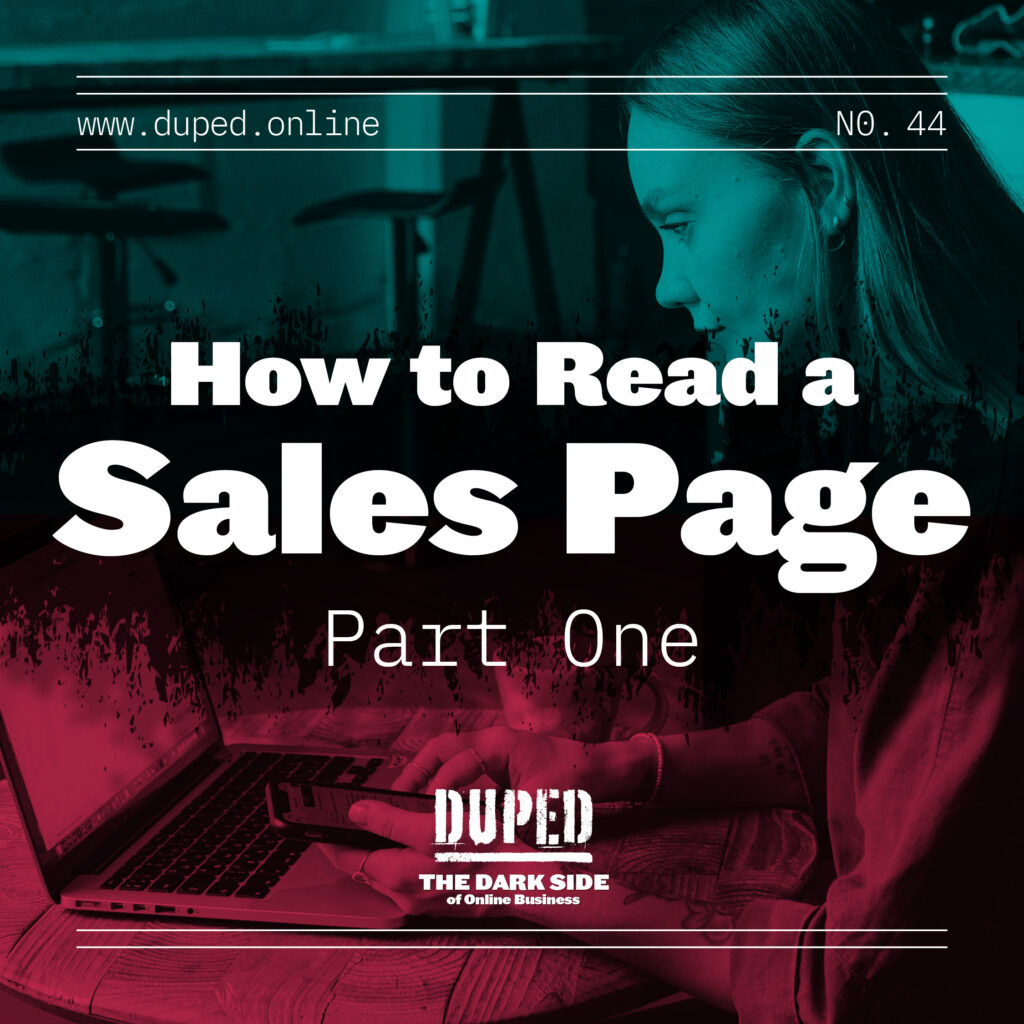
Payment Pitfalls: Navigating Guarantees, Refunds, and T&Cs
You’re excited about signing up for a new program, and you’re just about to check out, then you decide to read the terms and conditions…but then maybe they’re super long and you’re in a rush. Fast forward three weeks later and you realize this was a terrible choice and the program is hot garbage.
What are your options?
In this episode, we’re looking at the fine print of T&Cs, guarantees and refunds so you can save yourself a major headache and not waste your time or money with people who don’t live up to their marketing hype.

The exchange of money, or a payment for a good or service is a normal part of business.
But why is there so much chatter about them in online business? And why lately has the conversation been about people “flaking” on payment plans, doing chargebacks, and so on?
It’s because buyers are tired of sellers taking advantage of them. And many times, not making the payment or asking for a chargeback is the only recourse they have.
For years, programs, courses and coaching have been sold using manipulative marketing and predatory sales tactics. We’ve talked about many of these in prior episodes of this show, but in today’s episode, we want to dive into some of the big pitfalls consumers run into when purchasing.
The Power Dynamics Around Payments
Having clear terms and conditions and policies around payments is just good business for everyone involved. Before any money switches hands, you want to ensure that both parties understand how you’ll work together and what happens if you want to terminate the relationship.
Ideally, the power balance should be evenly split to protect the buyer and the seller. Especially as things can happen while working together where you discover it’s not a good fit, a major life event or something else entirely happens.
The big reason we wanted to tackle this topic is that in the online business realm, payment-related policies from guarantees to refunds and terms and conditions, tend to favor the seller over the buyer.
As a buyer, you must know exactly what you’re signing up for. Especially when we’ve seen multiple conversations lately talking about how buyers are screwing over sellers, and nowhere in that discussion is anyone pointing out that if you have that many people not paying you or asking for a refund, you’ve got a major problem with your marketing, sales or client experience.
We want to put some of the power back in your hands so you can make informed choices and know what to look for next time you’re about to hit the buy button.
Terms and Conditions
Let’s start with the basics, the terms and conditions. You’ll typically “agree” to the T&Cs at checkout in the online business world.
Oftentimes, this is a checkbox to say you agree or even tacit approval by simply checking out. In reality, so many people do NOT read these; they check the box and continue to make the purchase.
As a consumer, you need to seek out the terms and conditions. If you can’t find them easily, that should be a sign that they may be trying to hide information from you.
Here are a few examples found researching this episode:
- For one coach, they either didn’t have T&Cs at all or the TOS link when to Google terms.
- Another coach had no terms at all. On anything. Not even the website.
- Google Form sales page that would then lead to an invoice. No T&Cs in sight.
A few questions to consider:
- Are the T&Cs easy to find? Or are they buried in the footer of the site?
- Are they specific to the item you’re purchasing?
- If you can’t find them, why aren’t they there?
- Do they include clear policies related to refunds, guarantees and agreement termination?
- Do you understand the details of what you’re signing up for?
If you can’t answer these questions, that should give you pause. And if you’re uncomfortable with anything in the T&Cs, I would ask the seller for written clarification. If they’re unwilling to provide clarification or push you to just “trust” them, that’s a red flag.
Guarantees & Refunds
We’re all familiar with the idea of guarantees, especially from retailers. What a guarantee is may vary with everything from getting your money back to a replacement item or working with you until you’re happy.
The idea of a guarantee is to reduce the perceived risk of purchasing. Thanks to Loss Aversion, we try to avoid losing anything of value as it’s seen as painful.
We’ve all seen the guarantees on sales pages or during checkout. These are designed to reduce the perceived risk of purchasing as we’re hardwired to avoid potential loss, thereby boosting sales.
The most common guarantees for courses, programs and coaching are:
- A 7, 14 or 30-day money-back guarantee.
- A “I’ll work with you” guarantee.
- Minimum result guarantee.
On the surface, these guarantees seem fair and at times, even enticing, as you’re able to get a refund if you’re not satisfied.
But the reality is that these guarantees are often NOT what they seem.
The problem with many policies is the level of effort they require is a lot, and it’s purely subjective. They can easily dismiss your request as they’re the final decision.
Instead of saying no refunds, they’re lulling you into a sense of security that you can get your money back when you’re required to jump through hoops to do it.
Remember, this is about making more sales, not creating a level playing field for buyers. And if someone doesn’t have a guarantee, you need to know if there’s a refund policy, which should be clearly outlined in the T&Cs.
For guarantees and refunds, you need to understand:
- How long it’s valid from the time of purchase.
- What conditions may or may not qualify you for a refund?
- If there’s a payment plan when/if you can cancel future payments.
Watching for Payment Pitfalls
These are just a few payment pitfalls you need to watch for, and in an upcoming episode, we’ll be talking about payment plans, buy now/pay later, and other payment tactics to watch for.
To help you ensure that you’re not setting yourself up for misery later, here’s a quick rundown on what to watch for as a consumer:
- Clear and Easy to Find T&Cs: If you can’t find the T&Cs, that’s a red flag. If they’re not detailed or clear, that’s another red flag. A line that says simply “no refunds” at checkout isn’t T&Cs.
- Predatory T&Cs: Read the fine print, and if you’re unsure, Google what it means. Ask for clarification. If you’re not sure, pass on the purchase.
- Guarantees: Don’t take any guarantee at face value. You need to understand what caveats are attached and what you may need to do to get your money back.
- Refund Policy: Understand if you can or can’t get a refund. The more money you spend, the riskier it is, so ensure you have it if any money you can’t stomach losing is involved.
- Monitor Social: If someone is sharing on social they have many defaulted payments or problems with payment plans, that should pause you. This isn’t normal and may signal a problem with their business practices.
- Watch for Toxic Language: If word salad shows up about “betting on yourself” and not worrying about the details, that’s a clear sign that something is likely not as it seems.
Links for this episode:
Join the

Patreon

for only $7/month and get a
monthly bonus episode,
behind-the-scenes content
and more.










